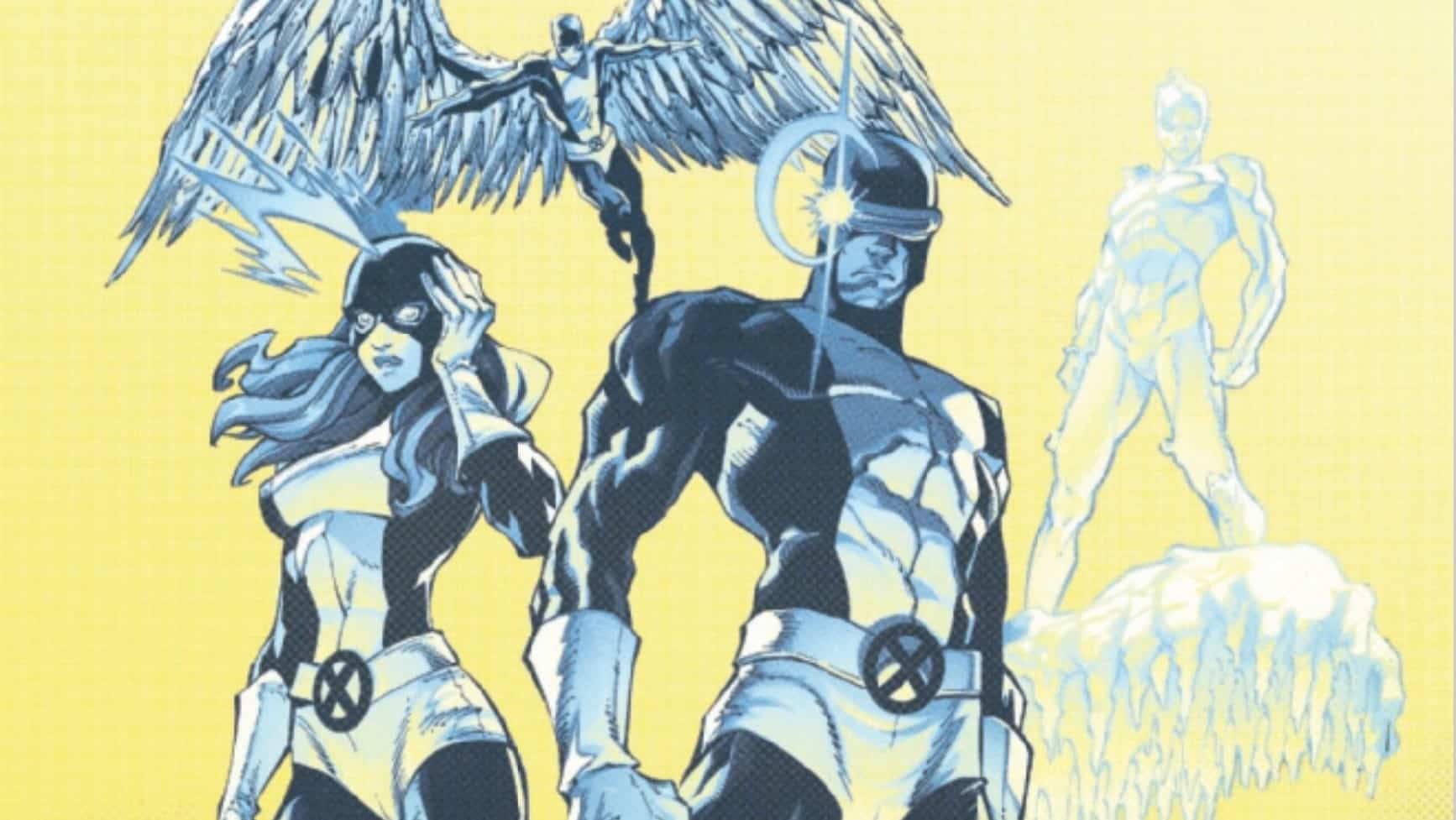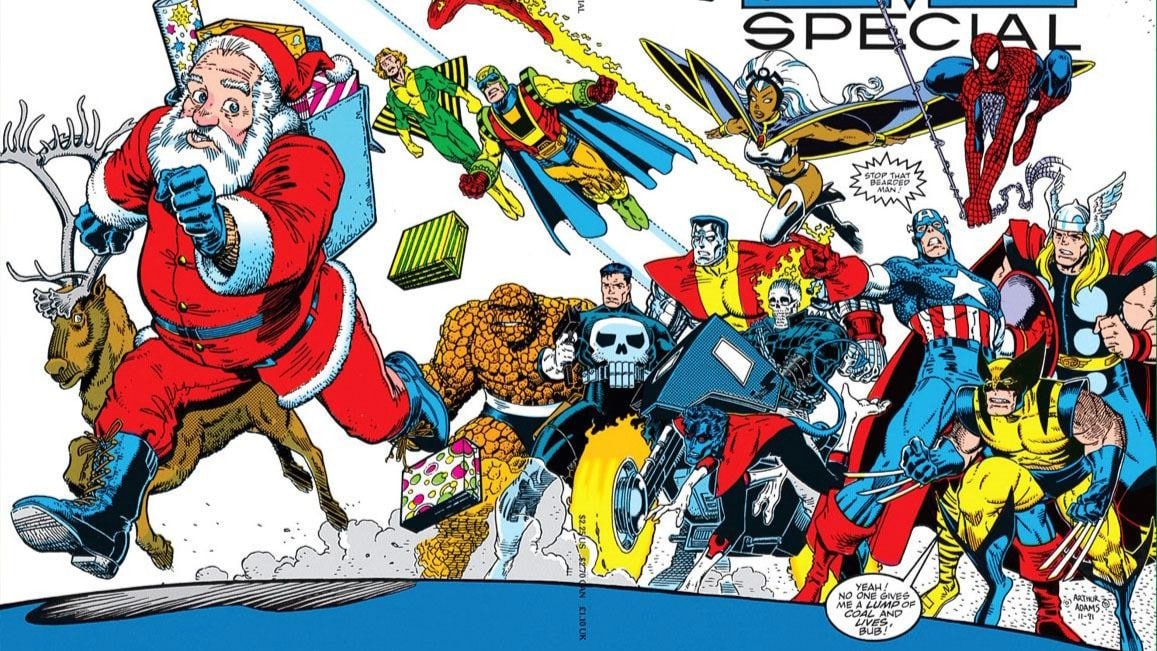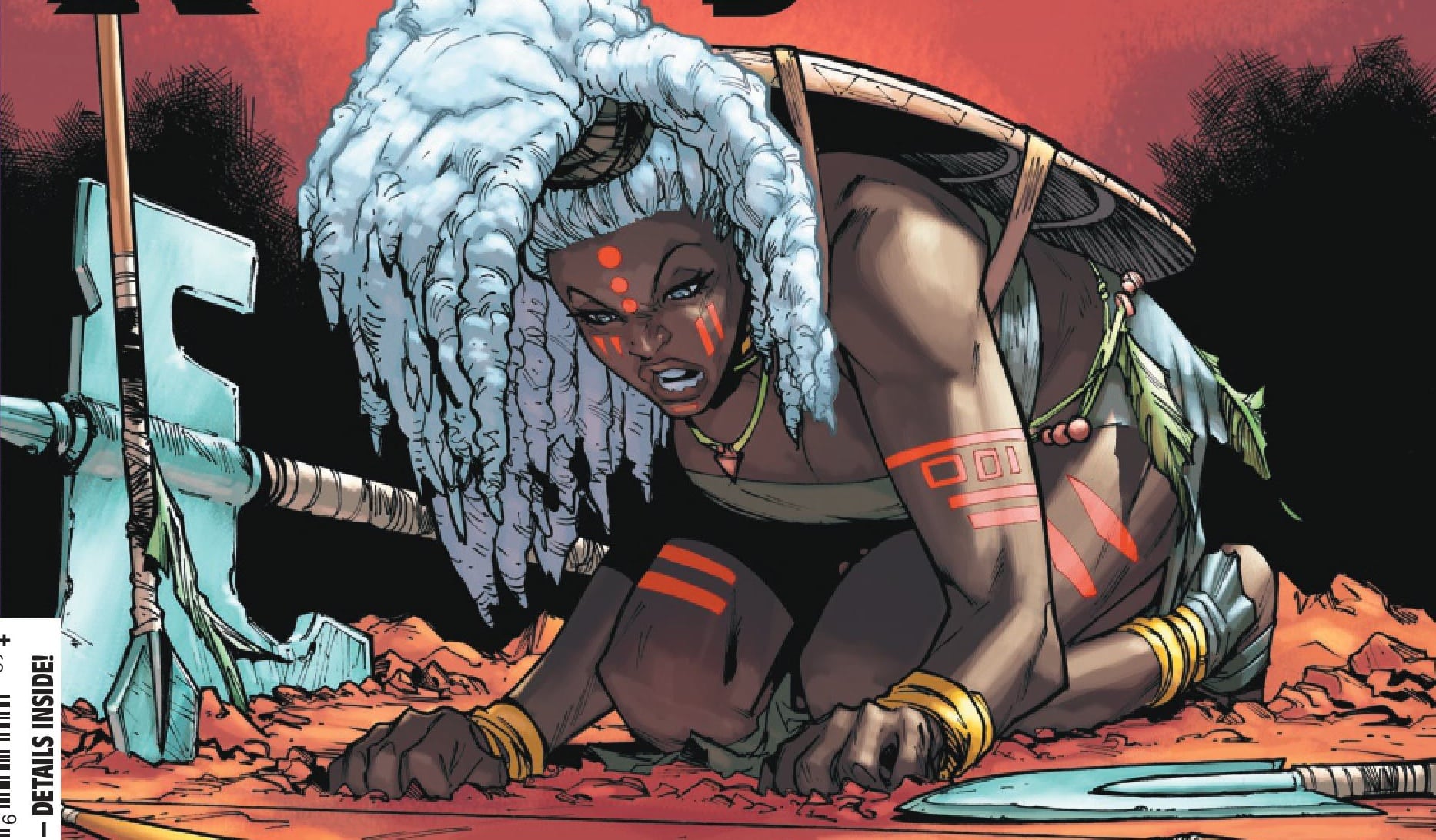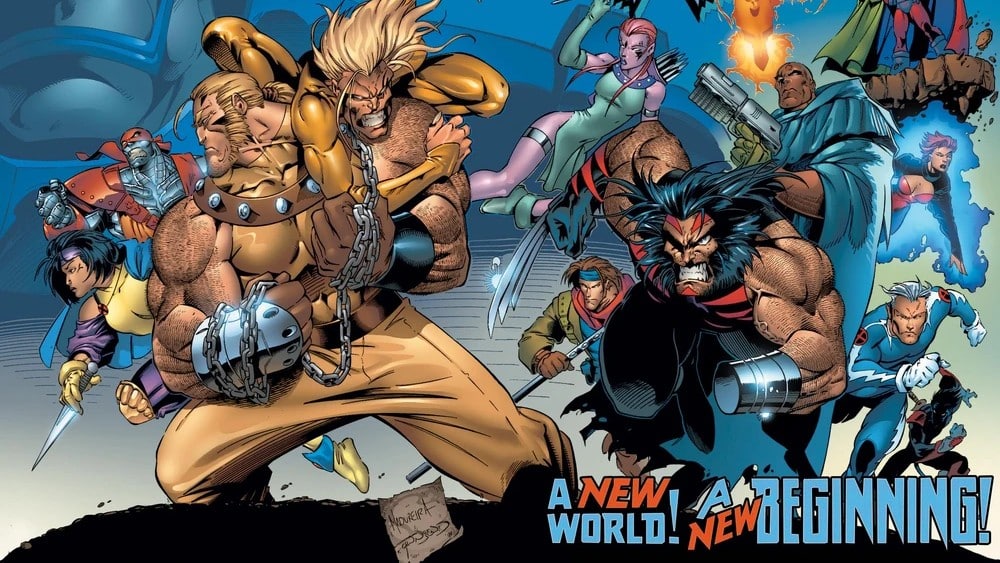I found myself struggling for a cohesive theme to some kind of end-of-the-year article, something that would capture the state of an industry whose health has been the status of much Mark Millar-fueled discourse lately.
Then I read a comic that was so bad it has me dreading what 2024 will bring.
On Wednesday, Marvel released Original X-Men #1, a just-under-the-wire 60th anniversary comic that tells yet another story where the original five X-Men — Cyclops, Marvel Girl, Beast, Angel and Iceman — are pulled forward to the future to confront one of their number who has grown up to make some bad decisions.
In this case, that someone is a version of Jean Grey who has given herself over to an evil version of the Phoenix Force that is also possessed by Onslaught, the parasitic psychic entity born of the darkest impulses of Magneto and Charles Xavier combined.
In a letter at the end of the comic, writer Christos Gage brags about all the continuity knowledge and “deep cuts” that went into making the book.
All of this is setup for a miniseries launching in March called Weapon X-Men, in which versions of Wolverine from across the multiverse (Age of Apocalypse Weapon X! Old Man Logan! Zombie Wolverine! Earth X Wolverine! Wolverine but Lady!) track down a dimension-hopping Onslaught, written by Gage and drawn by Yildiray Cinar, who drew the last arc of X-Men Red.
Pair that with a teaser released Wednesday for the next era of X-Men ongoings, and the problem is clear.
Marvel is determined to make the X-books go back to sniffing their own farts.

Let’s start with Original X-Men, and the idea that people still want to read a comic about five jars of mayonnaise that were retroactively considered a metaphor for the Civil Rights Movement. While yes, the individual characters have stood the test of time, as a team they are long past the point of freshness, as mutantkind has grown exponentially more diverse over the decades to match its readership.
When you write the O5, you write an X-Men story about a race of beings that is hated and feared for who they are but is stripped of all identity politics, all the intersectionality that actually makes the mutant metaphor work to the best of its ability as a commercial product. You write an Archie comic as soap opera. Brian Michael Bendis wrote the O5, sure, but he counterbalanced that with a bunch of new, diverse characters at the same time in Goldballs (now Egg), Tempus, Hijack, Triage and Morph. If the original X-Men are confronting themselves as adults, do you mean to tell me they’ve recruited no other X-Men in that time?
Not only that, but it’s worth remembering the original X-Men series was essentially Stan Lee and Jack Kirby’s scraps, stuff the two men were too exhausted to make sing after creating stuff like Fantastic Four, Spider-Man, Thor and other characters they clearly cared about more. Also, the people who grew up reading those five characters as a team are way outside the target demographic for the book. Think about it: If someone saved up their hard-earned pennies to buy X-Men #1 in 1963, they likely are somewhere between 70 and 75 years old.
Then there’s the Phoenix Force, now and forever a storytelling crutch that won’t go away. Concurrent to this comic coming out, there’s a whole mystery playing out in Immortal X-Men with Jean Grey — whom we thought killed during the Hellfire Gala — the Phoenix Force and the White Hot Room. Original doesn’t appear to tie into any of that, which is a shame because that’s a far better story. Instead, it uses the multiverse as an excuse to tell a hack story that doesn’t interfere with whatever’s happening in the rest of the X-books, in a move that makes it no different from any of the other nostalgia books Marvel’s been pumping out to fill shelf space.
The villain of the piece, Onslaught, is a character no one ever loved, born of editorial fiat with an explanation shoehorned in later. Onslaught is literally everything wrong with 1990s X-Men storytelling — the convoluted backstory, the behind-the-scenes fumbling, the throttling of books in service of a cheap-heat event — and yet some writer every few years tries to bring the concept back under the false assumption someone will pop for him, instead of remembering Onslaught for the bloated letdown that it was.
Most egregiously, this is another multiverse story during a time when multiverses have been done to death — and again, we just recently read a much better story about Jean Grey making alternate decisions and seeing how they play out. In this particular future, Jean and the original X-Men have used their powers to influence the world, seemingly benevolently, so it’s not just a generic multiverse story, it’s a riff on the 1985 Squadron Supreme series by Mark Gruenwald and Bob Hall. And a riff on how the Phoenix Five used their powers to start in Avengers vs. X-Men. Throw in the fact that the time-displaced O5 were chosen for their mission specifically because they’d already done something like this once before, and it’s clear there’s not an Original thought in this book. If I didn’t know who was writing, I’d say it was an AI-generated script.

Now, Gage is not a newcomer to the X-Men. Most notably for our purposes, he did a roughly 15-issue run on X-Men Legacy, where he spent the bulk of his time being neither Mike Carey nor Si Spurrier. But these days, Gage is known best for pulling Dan Slott’s ass out of the deadline fire in a Disney+ documentary about the making of a bad Iron Man crossover. He’s a reliable writer who can meet a deadline and help Marvel flesh out an event with tie-ins. And ultimately, that’s what this is: content that was delivered on time.
Drawing that content is Greg Land, the Chuck Austen of X-Men artists, paired with his usual backup singers, inker Jay Leisten and colorist Frank D’Armata. No one is ever happy to see Land and his faces that all look the same and his blatant photo reference and the weird post-sex glow all his characters seem to have on a book. Maybe in a comic about the O5, you want that saminess, or maybe, if you want a good comic about two distinct sets of the same characters who all wear the same costume, you hire an artist who can give each character their own, distinct silhouette, so Angel and Cyclops don’t look the same except one has a visor and the other has wings.
All of this is a direct lead-in to more of it in Weapon X-Men. More Onslaught, more multiverse-hopping, more Phoenix, more Wolverine, more stuff we’ve all seen before.
But perhaps the most thing-we’ve-all-seen-before came Wednesday, when Marvel dropped a teaser that just said, “X-MEN: From the Ashes. July 2024.” “X-Men” is in the logo that ran on covers roughly from 1968 to 2002, and on the 1990s animated series, soon to be relaunched on Disney+. “From the Ashes” is the title of the trade paperback that collects Uncanny X-Men #168 to 176, the Paul Smith era. Not that recent X-Men books and events haven’t repurposed older names (Inferno, Marauders, Trial of Magneto, etc.), but it’s noticeable in the current context.
The Krakoa era worked for so many reasons. It started with the singular vision of writer Jonathan Hickman. Marvel gave it space, in House of X and Powers of X, to establish and explore that vision before branching out into other books. It brought in star artists like Pepe Larraz, R.B. Silva and Valerio Schiti. It fostered a brain trust of writers and made room for more diverse voices like Vita Ayala, Leah Williams, Tini Howard and Victor LaValle. In doing that, it found room, and jobs, and stories, for characters who had largely been ignored or pushed to the side, and elevated characters like Synch, Doug Ramsey, Sage, Thunderbird and Kwannon.
Yes, the bloom fell off over time. Hickman moved on to other, less impressive projects, leaving the hit-or-miss Gerry Duggan to largely steer the ship from the writing side of things. The triumvirate of Williams, Ayala and Howard all pulled up stakes and found new homes at DC, taking some of the heart out of the books. The line in general has pushed harder and harder toward ever-relaunching miniseries that foster short attention spans in readers in hopes speculators will pick up the slack. And the current Fall of X books have fostered a beginning-of-the-end feeling, as all the “important” mutants wrap their Krakoa-era storylines in time for the big finales in Fall of the House of X and Rise of the Powers of X.

Industry-wide, 2023 has been a risk-averse year. Comics retailers have spoken — loudly — about a paring back of sales compared to the height of the pandemic, when a surplus of time and disposable income inflated the collector markets. A few smaller publishers have more or less disappeared (AfterShock, Valiant). We’ve seen layoffs and restructurings at IDW, Oni Press (last year but still) and DC. Don’t even get us started on what happened to poor ComiXology.
There have been some bright spots — Mad Cave expanding and picking up a number of licenses, Vault expanding into the music graphic novel realm, Skybound’s new Energon Universe line, AHOY Comics turning 5. And even as the year ends with another strong chorus of “comics are dying,” one must remember people in the industry say that with the same level of volume and lack of perception as fans bemoaning their favorite football team. Ultimately, it means nothing and things always turn around over time. (This is a dig specifically at Philadelphia Eagles fans. You’re 10-4. Take a chill pill.)
Still, Original X-Men is a canary in the coalmine of the X-office, a warning that more empty nostalgia is ahead in 2024, a year we didn’t need any more reason to dread.
Dan Grote is the editor and publisher of ComicsXF, having won the site by ritual combat. By day, he’s a newspaper editor, and by night, he’s … also an editor. He co-hosts The ComicsXF Interview Podcast with Matt Lazorwitz. He lives in New Jersey with his wife, two kids and two miniature dachshunds, and his third, fictional son, Peter Paul Winston Wisdom. Follow him @danielpgrote.bsky.social.






